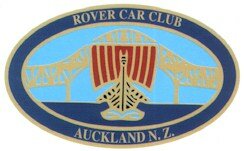
By Mike Hammond
As the owner of an SD1 VDP I admit to bias. It’s a car that is great fun to drive as it has excellent road manners, sufficient power from a great sounding motor for most situations, and a low seating position that accentuates speed. The styling is unique and it has most of the gadgets of more modern cars. While it can be easily seen off by a modern hot hatch with a third the engine capacity, it is far more roomy and holds a decent amount of luggage.
If one wishes to be critical the complex electrics rarely work 100% , and fixing any such problem takes a lot of detective work. The trip computer information is a bit dodgy at times and the Konis that have replaced the self levelling struts on my car probably make for a slightly harsher ride. The doors don’t close with the ‘thunk’ of a P4, 5 or 6. 50 what? I enjoy it immensely and therefore thought it would be fun to write something of it’s design and manufacture, hopefully with some information that you have not come across before.
Where to begin? Well, when you read all the stuff that has been written about the SDl and the interviews h Id with the various personalities involved, it’s a wonder that the car saw the light of day.
It was primarily seen as a replacement for the P6 range and Triumph 2.5 series, which by then were part of Leyland’s, but some saw it as meeting the gap in the Rover line-up caused by the cancellation at the eleventh hour of the P8 project.
Development of this replacement, known as the P10, eventually got under way in1969, with Rover working on one scheme and Triumph on another. It wasn’t until February 1971 that the two design teams were brought together by Leyland’s management and the decision taken to go exclusively with David Bache’s design from Rover. From that point on it was also agreed that the car would be badged only as a Rover and not marketed by both companies, although it was renamed RT1 (Rover-Triumph). This name was short-lived once Jaguar, Rover and Triumph were grouped together under the Specialist Division as part of a reorganisation of British Leyland and it received its third monica SD1 (for Specialist Division). It’s odd that this name really stuck. As far as I can see it was never advertised by this title but always as a Rover followed by the engine capacity, with the exception of the Vitesse, but today the model is nearly always referred to as an SD1.
For me, the late David Bache was a stylist that produced some designs that will never date, in the sense that their overall balance and form continues to draw admiration. In this category I would place the P5, P6, SD1 and his tweaking of the initial Range Rover concept. On the other hand I think that the P8 and SD2 (and later the Metro and Maestro) designs were unbalanced and very much confined to the decades in which they were created. It’s as well the P8 and SD2 never went into production as I’m sure they would not have enhanced his great reputation.
While styling was developed the engineering side was busy with engines and suspension. The Rover-Buick V8 from the P5B and P6B had been developed further to power the P8 right up to 4.4 litres. This engine eventually powered the Australian P76. With 3500 capacity for the SDl it received improved breathing and extraction with bhp up and torque revs down, so that motorway cruising and maximum torque happily coincided. Even though my SD1 is an automatic, in comparison with my P6B, both of which have high mileages, it appears to be a much freer revving engine.
One thing I would like to experience is to drive a well sorted SD1 with the five speed box, the LT77, that was developed at Triumph for a range of Leyland cars. The overdrive fifth gear made motorway cruising very relaxing and when in good nick was a lovely box to use. I have driven a P6BS with a LT77 box conversion and it was very sweet indeed. Most P6 conversions are done with the Celica box, which is claimed to be able to handle more horse power.
There’s been a lot written about the SD1 rear suspension. It’s pretty clear that cost considerations influenced the decision to use a live rear axle. Reading various interviews with Spen King, who had overall engineering responsibility, he grudgingly acknowledged that his preference would have been an independent rear suspension set-up, but found a number of justifications, apart from cost, for not adopting it. These consisted of being able to house the fuel tank in front of the rear axle line, keeping the rear wheels parallel and on a fixed track and having adequate suspension movement.
The self levelling dampers which allow softer spring rates were, I suppose, an important component to getting the desired suspension characteristics. As already mentioned my SD1 has had these replaced by Konis which of course have higher rate coils to balance things off. If any reader has experience driving an SD1 with the self levelling Nivomat and also one fitted with gas shocks I’d be interested in hearing what the differences are and would be happy to publish their comments.
